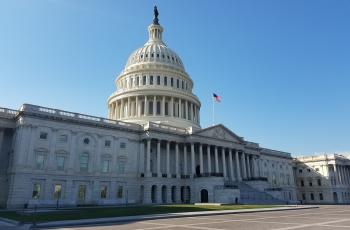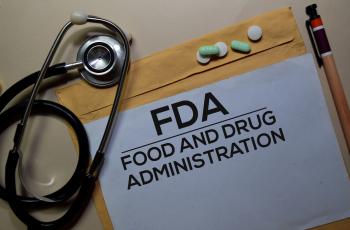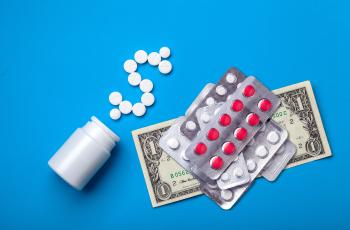Largest Expansion of SNAP in 60 Years is Approved: What this Means for Millions with Diabetes
People with diabetes are at a higher risk of food insecurity. The recent historic expansion of the Supplemental Nutrition Assistance Program (SNAP) will help millions improve their health and become food secure.
On Oct. 1, Congress passed legislation to permanently expand the Supplemental Nutritional Assistance Program’s (SNAP) monthly benefits, also referred to as food stamps, by an average of 27% over pre-pandemic levels. This increase is the largest expansion of food assistance benefits in the program’s history and promises to have a monumental impact on access to food and nutrition for people with diabetes.
In response to the economic challenges posed by the COVID-19 pandemic, Congress temporarily expanded SNAP by 15% in early 2020. Due in large part to this intervention, the rate of food insecurity of households in the United States remained unchanged at 10.5% from 2019 to 2020 even with the massive layoffs, wage reductions, and increases in food prices brought on by the pandemic.
“We still need more evidence to confirm this, but I think the plateauing of food insecurity rates represents the incredible success that our programs had in creating new ways for families to afford food,” said Dr. Hilary Seligman, professor of medicine at the University of California San Francisco, who specializes in food insecurity and its health implications. “This is an important story because it proves that we know how to eliminate food insecurity in the US and have the infrastructure to continue these efforts.”
While these benefits expired at the end of September, the permanent expansion will amount to roughly a $36 increase per person, per month from pre-pandemic levels, depending on one’s income and cost of living. This expansion will go a long way toward increasing access to healthy foods for those who are food insecure.
What is SNAP?
SNAP is a food assistance program originally established by the US Department of Agriculture (USDA) in 1964 that now supports over 39 million Americans. The program helps low-income Americans access “the food they need for good health” by providing benefits in the form of a monthly stipend ($251 average per person as of October 2021) that can be used at a range of grocery stores and other retailers across the US. The amount of SNAP benefits a person gets depends on your income, cost of living, and the number of people in your household.
What does the expansion of SNAP mean for people with diabetes?
A monthly increase of $36 can make a meaningful difference for the estimated 37 million Americans who face food insecurity, defined as a lack consistent access to enough food for an active, healthy life. An estimated 80 percent of SNAP benefits are spent within the first two weeks after receiving benefits each month, making it very difficult for low income families to purchase healthy foods toward the end of the month. Food insecurity can lead to unhealthy habits such as binge eating due to uncertainty about future meals. The increase in SNAP benefits can help improve consistent access to healthy foods, especially at the end of each month.
People with diabetes experience food insecurity at rates almost double the national average – an estimated 16% of people with diabetes experience food insecurity compared to 9% of the general population. Diabetes can increase a person’s risk for food insecurity, in part because the high healthcare costs associated with diabetes management leaves limited funds for food. Those who experience food insecurity are more likely to have diabetes and related complications because they lack access to nutritious foods that help prevent the disease. This vicious cycle impedes diabetes prevention and treatment efforts and fuels rates of food insecurity.
“Every dollar given in SNAP benefits can allow families to spend that money on other necessary expenses,” said Seligman. “SNAP can also have a tremendous local economic impact, supporting a local food ecosystem and many jobs, buffering the impact felt by these communities during an economic downturn.”
Over 43% of food insecure people with diabetes receive SNAP benefits, so this historical expansion of food assistance could be critical in increasing their access to healthy foods. These funds could also improve diabetes prevention in the US, especially diabetes prevention in children who make up 44% of SNAP participants. Increased access to nutrition can ultimately reduce the risk for health complications and support others receiving SNAP in preventing type 2 diabetes.
While the permanent expansion of SNAP benefits is a step in the right direction, there is still much more to be done for people and families faced with food insecurity, especially those with diabetes. The majority of food insecure people with diabetes (57%) do not have access to SNAP.
“The number one way we can help people with diabetes with food insecurity is to increase SNAP benefits,” said Seligman. “Secondly, we can provide other avenues to access healthy foods for those who are not reached by SNAP benefits. This could include produce prescription programs, food pantries, or home delivered meals.”
If you or someone you know is faced with food insecurity, here are a few resources that can help:
- SNAP website: which can help determine your eligibility for SNAP benefits
- Benefits.gov eligibility checker: which can help you access other government benefits related to food and health care
- NSLP: The National School Lunch Program
- diaTribe Access Page: Resources for accessing diabetes medication and technology. Additionally, this page includes a search tool on the right-hand side which can help you locate reduced-cost services like food, housing, and medical care in your area.
- findhelp.org: a free database that has helped millions find free or low-cost food and other essential services in their area
Additionally, if you’re interested in more information about food insecurity and diabetes, check out our articles on the topic:
- Food Insecurity and Diabetes, A Dangerous Combination
- Emergency Changes to SNAP (Food Stamps) and WIC Adjust to Thousands of New Applicants During COVID-19
- Insights from the ADA Scientific Sessions – Social Determinants of Diabetes Health
- How Community Health Workers Impact Diabetes Care
Want to learn more about these permanent SNAP benefit changes? Check out this resource from the US Department of Agriculture or contact your local SNAP office.


